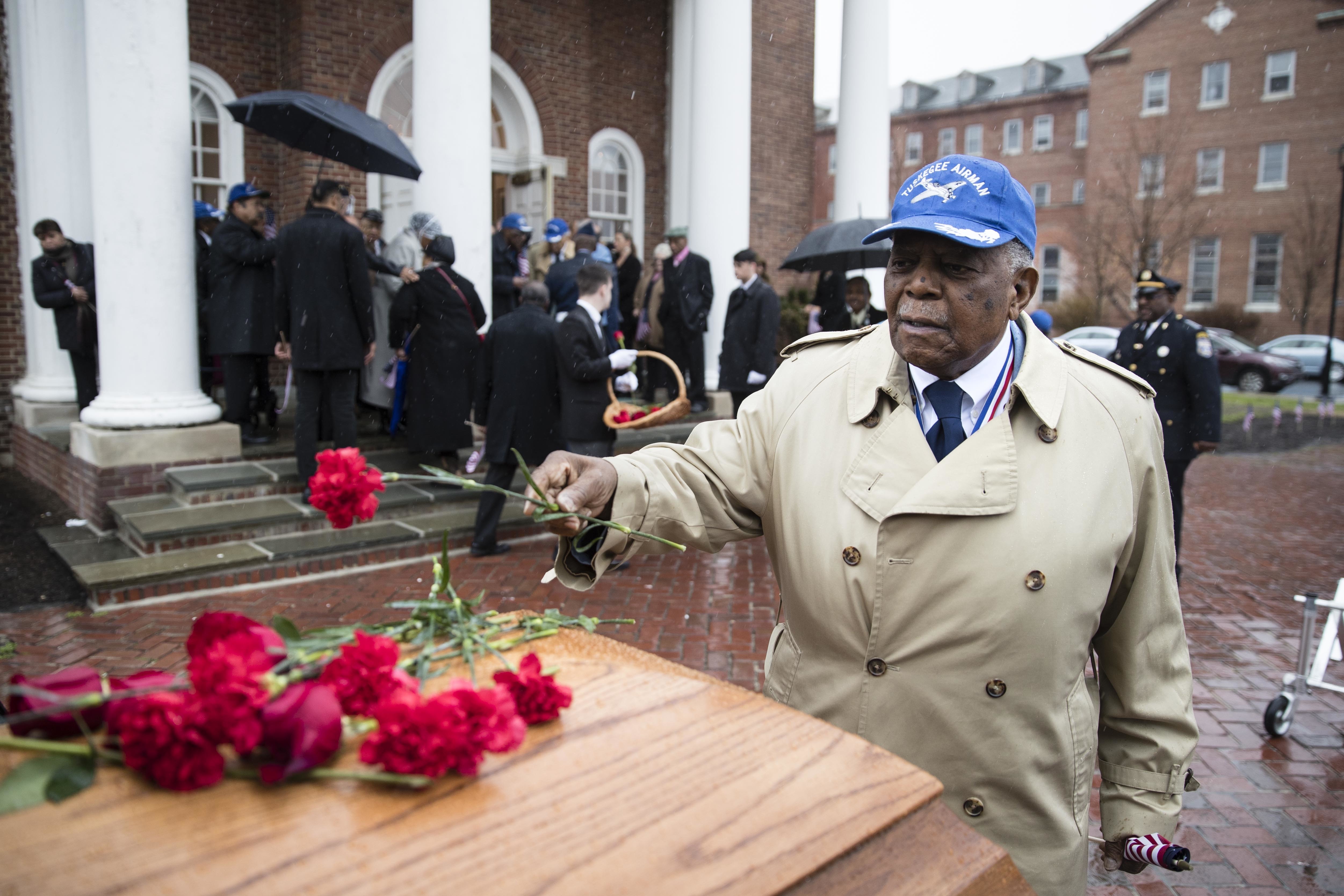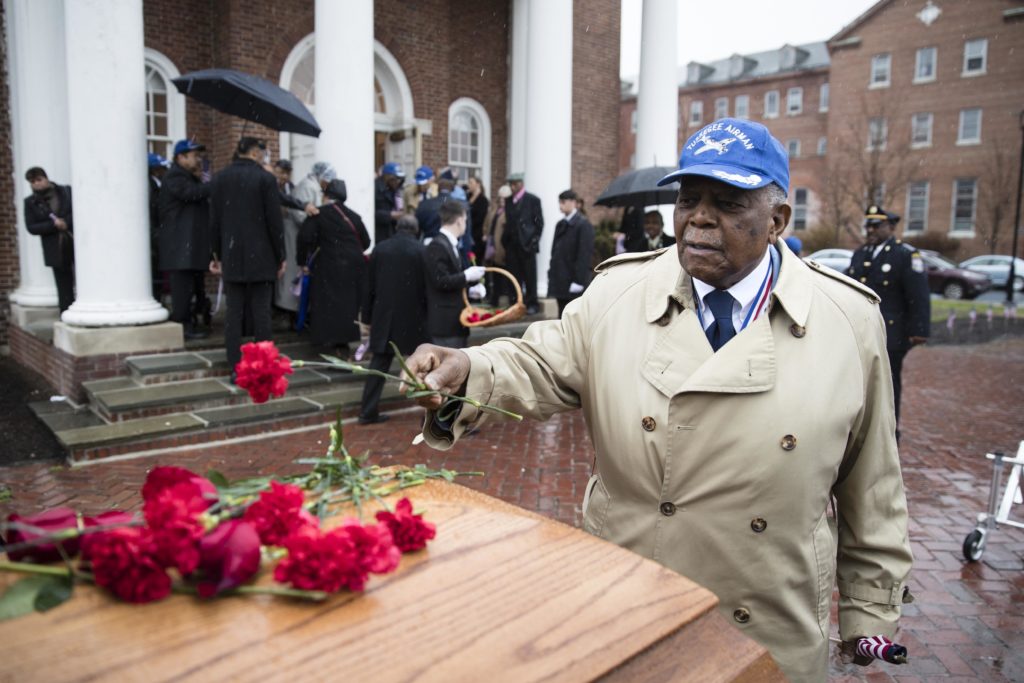
By Errin Haines Whack
Associated Press

PHILADELPHIA (AP) — John L. Harrison Jr., who served as a World War II pilot with the famed all-black Tuskegee Airmen, has died. He was 96.
Harrison died March 22 at a hospice in Philadelphia, according to the Murphy Ruffenach Funeral Home. A funeral with military honors was held Friday.
Harrison was 22 when he became one of America’s first black military airmen, one of nearly 1,000 pilots who trained as a segregated unit with the Army Air Forces at an airfield near Tuskegee, Alabama.
“We were Americans, we were young, and we wanted to defend our country, just like everyone else,” Harrison said in a 2009 oral history.
Fellow Tuskegee airman Eugene Robinson said that becoming a pilot was a childhood dream of Harrison’s after seeing airplanes in Omaha, Nebraska, where he grew up, and reading in a magazine about black men being trained as pilots.
Robinson said it was a big dream for a black child during segregation.
“He wanted to fly an airplane, like so many young people,” Robinson said.
Harrison saw combat in Italy during World War II and remained in the service until his retirement as an Air Force major after two decades.
He flew all types of planes, including prop fighters, jet fighters, twin-engines, four engines and sea planes. His family said Harrison crossed the Pacific Ocean more than 50 times, and the Atlantic Ocean 35 times as a pilot for the Military Air Transport Service. Harrison was stationed and traveled in Europe, Asia, Africa and the Arctic.
He also served as an officer and a director for the Peace Corps, based in East Africa. He worked in the administrations of President Richard Nixon and Pennsylvania Gov. Dick Thornburgh, and as director of affirmative action for the Boeing Aircraft Company.
In 2007, the Tuskegee Airmen were awarded the Congressional Gold Medal, the nation’s highest civilian honor. President George W. Bush saluted the then-300 surviving airmen at a ceremony in the Capitol, and apologized for “all the unreturned salutes and unforgivable indignities” they had endured.



